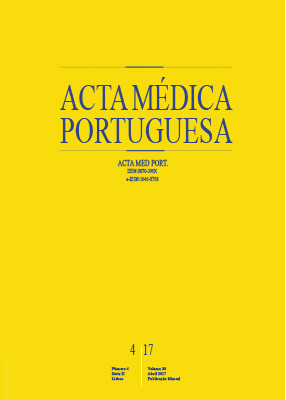Bilateral Deep Vein Thrombosis Associated with Inferior Vena Cava Agenesis in a Young Patient Manifesting as Low Back Pain
DOI:
https://doi.org/10.20344/amp.7744Keywords:
Low Back Pain, Vascular Malformations, Vena Cava, Inferior/abnormalities, Venous ThrombosisAbstract
Congenital absence of the inferior vena cava is a rare vascular anomaly, and most cases are asymptomatic. Nevertheless, patients with inferior vena cava malformations may have increased risk of deep venous thrombosis. Particularly, cases of bilateral deep venous thrombosis may arise owing to an insufficient collateral venous drainage from the lower limbs. We hereby describe a case of a previously healthy young male patient presenting with bilateral lower limb deep venous thrombosis as the initial clinical manifestation of congenital inferior vena cava agenesis. We conclude that in young patients presenting with deep venous thrombosis, especially when thrombosis occurs spontaneously, bilaterally, or recurrently, inferior vena cava anomalies should be thoroughly investigated and ruled out as appropriate.
Downloads
Downloads
Published
How to Cite
Issue
Section
License
All the articles published in the AMP are open access and comply with the requirements of funding agencies or academic institutions. The AMP is governed by the terms of the Creative Commons ‘Attribution – Non-Commercial Use - (CC-BY-NC)’ license, regarding the use by third parties.
It is the author’s responsibility to obtain approval for the reproduction of figures, tables, etc. from other publications.
Upon acceptance of an article for publication, the authors will be asked to complete the ICMJE “Copyright Liability and Copyright Sharing Statement “(http://www.actamedicaportuguesa.com/info/AMP-NormasPublicacao.pdf) and the “Declaration of Potential Conflicts of Interest” (http:// www.icmje.org/conflicts-of-interest). An e-mail will be sent to the corresponding author to acknowledge receipt of the manuscript.
After publication, the authors are authorised to make their articles available in repositories of their institutions of origin, as long as they always mention where they were published and according to the Creative Commons license.









